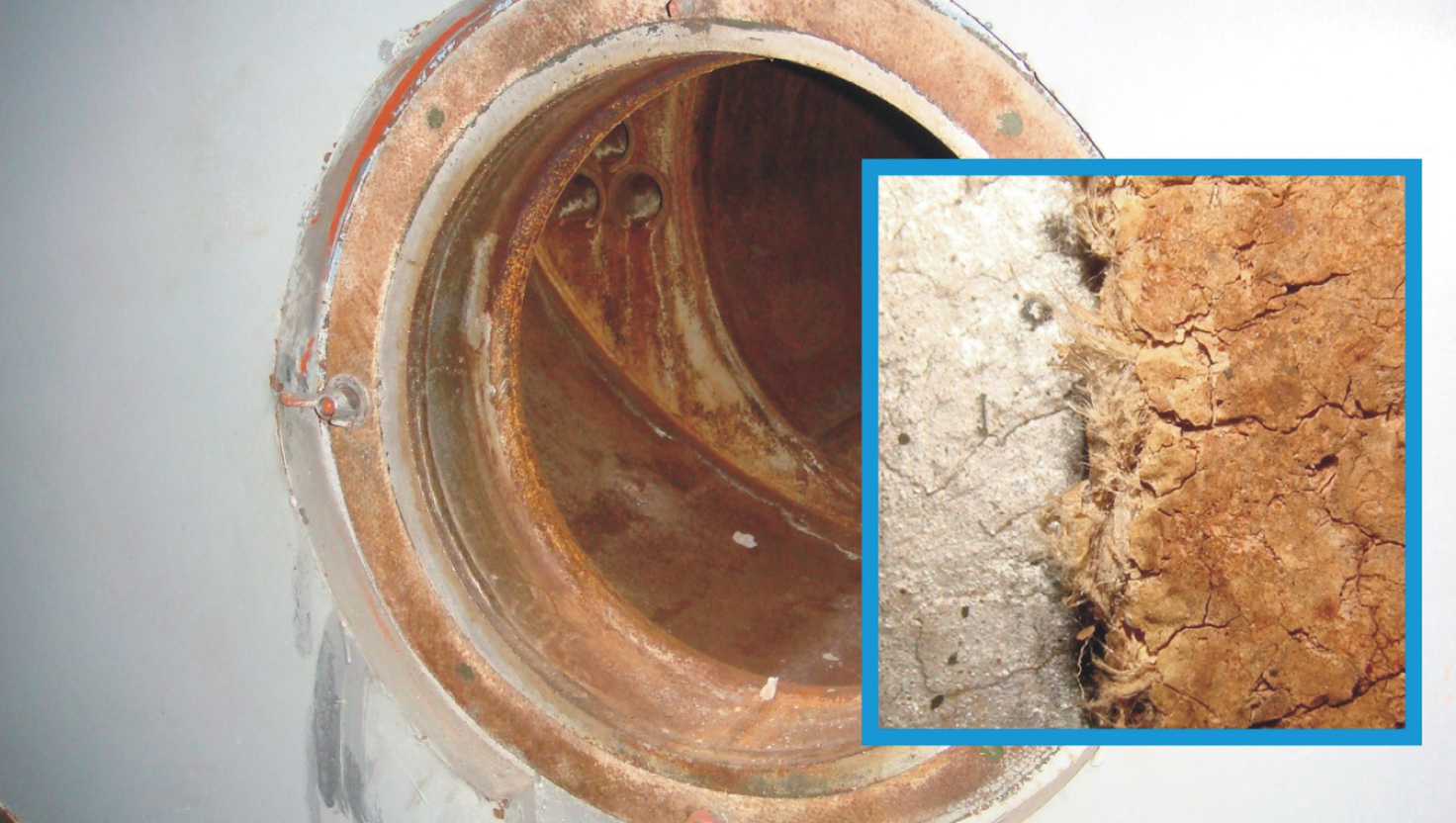Get Your Free Mesothelioma Guide

Find a Top Mesothelioma Doctor

Access Help Paying for Treatment

Gaskets create a tight seal between pipes or pieces of machinery. Common types of asbestos gaskets include rope, oval, sheet and spiral wound gaskets. Installation and removal of asbestos gaskets is known to cause asbestos-related diseases.

Asbestos-based gaskets were used to create a tight seal between pipes or pieces of machinery in engines and heavy industry. Manufacturers used these gaskets until public awareness of asbestos-related diseases motivated them to find substitutes for the toxic mineral.
While most modern gasket manufacturers now use heat-resistant substitutes for asbestos, the U.S. Environmental Protection Agency reports that imports of chrysotile asbestos are still legally used to make sheet gaskets and other types of gaskets. Most manufacturers of asbestos gaskets operate internationally, and it remains legal to import asbestos gaskets. Thankfully, many American gasket distributers choose to sell asbestos-free gaskets to protect their workers and customers.
Workers remain at risk of encountering asbestos gaskets when taking apart old engines or industrial machinery. Do-it-yourself auto mechanics are also at risk of exposure to old asbestos gaskets. Parts sealed with asbestos gaskets include pipes, pumps, compressors, valves, boilers, engine cylinder heads, heat exchangers and condensers.
Common types of asbestos gaskets include:
Asbestos Rope Gaskets: Soft rope woven from white asbestos fibers could be made into a fireproof gasket of almost any size and shape, offering a flexible solution for sealing the doors of boilers, furnaces and ovens. The loose binding of the mineral fibers makes the associated exposure risk particularly severe.
Asbestos Oval Gaskets: This type of gasket combines soft asbestos material with a wire insert that gives it shape and extra strength.
Asbestos Spiral Wound Gaskets: This sophisticated type of gasket is made from concentric layers of metal and asbestos. The product’s design is extremely strong, but it still leaves nearly pure asbestos fibers exposed to the open air.
Asbestos Sheet Gaskets or Sheet Packing: To mass produce asbestos gaskets for standardized parts, manufacturers pressed asbestos and other fibers into a firm, cardboard-like sheet from which they could punch out gaskets of all shapes. Many installation workers also manually cut sheet packing to size for individual parts.
Some brands of asbestos sheet packing and gaskets include:
| Manufacturer | Brand |
|---|---|
| Anchor Packing Company | Target Gasket Sheet, Tauril Sheet Packing |
| Chemical & Power Products Inc. | Chempro Gaskets |
| Crane Co. | Cranite Sheet Packing |
| Durabla Manufacturing Company | Durabla Black Gasket |
| Goetze Gasket and Packing Company Inc. | Goetzerit Sheet Packing |
| Greene, Tweet & Company | Palmetto Folded Asbestos Packings and Gaskets |
| Melrath Supply and Gasket Company | Melbesto Superheat Gaskets |
Other companies that manufactured asbestos gaskets include:
Get Your Free Mesothelioma Guide

Find a Top Mesothelioma Doctor

Access Help Paying for Treatment

When asbestos products such as gaskets are cut, damaged or disturbed, they release microscopic fibers into the air that can lodge themselves into the lungs and cause diseases including mesothelioma and asbestosis.
Sheet gasket material commonly contained up to 70% to 80% chrysotile asbestos. Gaskets designed for acidic environments often contained a more dangerous form of asbestos called crocidolite, which is also known as blue asbestos. The fiber filler in spiral wound gaskets was often almost completely pure asbestos.
Exposure to asbestos gaskets is known to cause the following diseases:
Workers who manufactured or installed asbestos gaskets bear the highest risk of developing asbestos-related diseases such as mesothelioma or asbestosis. Any time asbestos sheet packing was cut into a gasket on site, or an old gasket was scraped off a part during machine or vehicle maintenance, this activity put every worker in the area in danger of asbestos exposure.
Occupations at risk include:
Outside the workplace, asbestos exposure from gaskets may occur when car owners perform maintenance on older cars or cars with imported aftermarket parts.
It is important to see a pulmonologist for annual asbestos disease screenings if you were exposed to asbestos gaskets. Catching asbestos-related diseases early and seeking treatment from a specialist leads to the best chances of long-term survival.
Many people who developed illnesses after working with asbestos gaskets have received compensation for asbestos exposure after filing lawsuits against manufacturers.
Manufacturers of asbestos gaskets have been held liable in the U.S. court system for the diseases their products cause because evidence has shown they were aware of the dangers of asbestos and chose to use it regardless of the health consequences.
An experienced mesothelioma attorney can review your case and let you know what types of legal claims you may qualify to file. You may be eligible to file a lawsuit and multiple asbestos trust fund claims.
Other options for compensation include VA claims, travel and treatment grants, workers’ compensation and Social Security Disability.

We have more than 50 years of combined experience helping mesothelioma patients.
Chat NowAbatement of asbestos gaskets should only be performed by licensed professionals because these products are friable, meaning easily crumbled with light pressure, and likely to release significant amounts of asbestos upon removal.
When removing old asbestos gaskets and sheet packing from pipes and machinery, abatement workers dampen the material before scraping it off to reduce the amount of asbestos dust that becomes airborne. They then dispose of the waste in an airtight, labeled container or polythene sack carefully sealed with tape. Each state and county sets guidelines on how to properly dispose of asbestos and steep fines exist for violating these regulations.
Abatement workers always wear personal protective equipment, including a high-efficiency particulate air filter mask, when handling any asbestos-containing material. They also build a negative-pressure environment to prevent exposing others to asbestos fibers.
As public awareness of asbestos-related diseases broadened in the 1970s and 1980s, American manufacturers gradually phased out the use of asbestos in gasket products.
Gaskets cut from asbestos sheet packing were used in a variety of factories, refineries and power plants. Engineers considered asbestos mixed with fiber fillers the ideal material for sealing any mechanical system that involved the transport of hot gases, oil, steam, acids or other chemicals.
Asbestos gaskets also became a staple of shipbuilding, with U.S. Navy use beginning in the 1920s and rising significantly during World War II and into the Cold War. Because many gaskets are designed to be installed permanently, some older ships still contain these materials.
Engineers originally developed high-pressure gaskets and sheet packing to seal parts in steam engine boilers and locomotives. As the automobile and oil-refining industries grew up in tandem, the applications for asbestos gaskets multiplied. In 1939, John Crane Inc. developed a seal for car engines that helped the company become the global industry leader in mechanical seals for decades.
Asbestos gaskets were first invented in 1899 by an Austrian engineer named Richard Klinger. By 1912, the Flexitallic Gasket Company was selling the first spiral wound gasket.
Recommended ReadingYour web browser is no longer supported by Microsoft. Update your browser for more security, speed and compatibility.
If you are looking for mesothelioma support, please contact our Patient Advocates at (855) 404-4592
The Mesothelioma Center at Asbestos.com has provided patients and their loved ones the most updated and reliable information on mesothelioma and asbestos exposure since 2006.
Our team of Patient Advocates includes a medical doctor, a registered nurse, health services administrators, veterans, VA-accredited Claims Agents, an oncology patient navigator and hospice care expert. Their combined expertise means we help any mesothelioma patient or loved one through every step of their cancer journey.
More than 30 contributors, including mesothelioma doctors, survivors, health care professionals and other experts, have peer-reviewed our website and written unique research-driven articles to ensure you get the highest-quality medical and health information.
My family has only the highest compliment for the assistance and support that we received from The Mesothelioma Center. This is a staff of compassionate and knowledgeable individuals who respect what your family is experiencing and who go the extra mile to make an unfortunate diagnosis less stressful. Information and assistance were provided by The Mesothelioma Center at no cost to our family.LashawnMesothelioma patient’s daughter


Whitmer, M. (2025, January 13). Asbestos Gaskets. Asbestos.com. Retrieved April 10, 2025, from https://www.asbestos.com/products/asbestos-gaskets/
Whitmer, Michelle. "Asbestos Gaskets." Asbestos.com, 13 Jan 2025, https://www.asbestos.com/products/asbestos-gaskets/.
Whitmer, Michelle. "Asbestos Gaskets." Asbestos.com. Last modified January 13, 2025. https://www.asbestos.com/products/asbestos-gaskets/.
An occupational scientist or another expert who specializes in occupational hazards reviewed the content on this page to ensure it meets current scientific standards and accuracy.
Sean Fitzgerald, PG, is a research geologist specializing in asbestos environmental studies.
Our fact-checking process begins with a thorough review of all sources to ensure they are high quality. Then we cross-check the facts with original medical or scientific reports published by those sources, or we validate the facts with reputable news organizations, medical and scientific experts and other health experts. Each page includes all sources for full transparency.
Please read our editorial guidelines to learn more about our content creation and review process.
